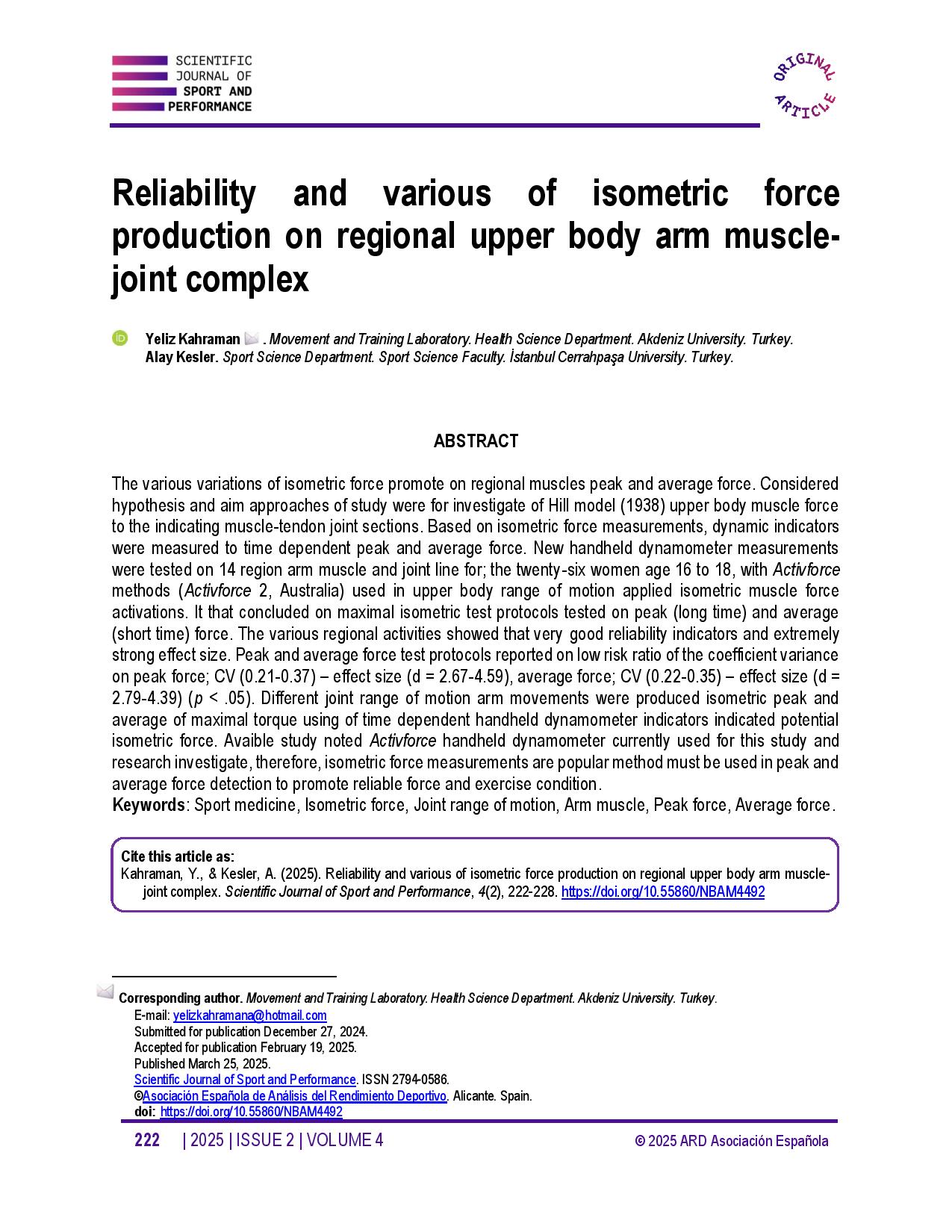Reliability and various of isometric force production on regional upper body arm muscle-joint complex
Main Article Content
Abstract
The various variations of isometric force promote on regional muscles peak and average force. Considered hypothesis and aim approaches of study were for investigate of Hill model (1938) upper body muscle force to the indicating muscle-tendon joint sections. Based on isometric force measurements, dynamic indicators were measured to time dependent peak and average force. New handheld dynamometer measurements were tested on 14 region arm muscle and joint line for; the twenty-six women age 16 to 18, with Activforce methods (Activforce 2, Australia) used in upper body range of motion applied isometric muscle force activations. It that concluded on maximal isometric test protocols tested on peak (long time) and average (short time) force. The various regional activities showed that very good reliability indicators and extremely strong effect size. Peak and average force test protocols reported on low risk ratio of the coefficient variance on peak force; CV (0.21-0.37) – effect size (d = 2.67-4.59), average force; CV (0.22-0.35) – effect size (d = 2.79-4.39) (p < .05). Different joint range of motion arm movements were produced isometric peak and average of maximal torque using of time dependent handheld dynamometer indicators indicated potential isometric force. Avaible study noted Activforce handheld dynamometer currently used for this study and research investigate, therefore, isometric force measurements are popular method must be used in peak and average force detection to promote reliable force and exercise condition.
Article Details

This work is licensed under a Creative Commons Attribution-NonCommercial-ShareAlike 4.0 International License.
References
Hebert, L. J., Maltais, D. B., Lepage, C., Saulnier, J., & Crete, M. (2015). Hand-held dynamometry isometric torque reference values for children and adolescents. Pediatric physical therapy: the official publication of the Section on Pediatrics of the American Physical Therapy Association, 27(4), 414-423. https://doi.org/10.1097/PEP.0000000000000179 DOI: https://doi.org/10.1097/PEP.0000000000000179
Hill, A. V. (1938). The heat of shortening and the dynamic constants of muscle. Proc. R. Soc. Lond. B126136-195.
Jan Nijhof, E., & Gabriel, D. A. (2006). Maximum isometric arm forces in the horizontal plane. Journal of biomechanics, 39(4), 708-716. https://doi.org/10.1016/j.jbiomech.2005.01.004 DOI: https://doi.org/10.1016/j.jbiomech.2005.01.004
Kahraman, Y. (2024). A new hand dynamometer activforce isometric muscle activation on single joint muscle force of volleyball players. Health Promotion & Physical Activity, 25(4), 22-30. https://doi.org/10.55225/hppa.548 DOI: https://doi.org/10.55225/hppa.548
Karagiannopoulos, C., Griech, S., & Leggin, B. (2022). Reliability and validity of the activforce digital dynamometer in assessing shoulder muscle force across different user experience levels. International journal of sports physical therapy, 17(4), 669-676. https://doi.org/10.26603/001c.35577 DOI: https://doi.org/10.26603/001c.35577
Maffiuletti, N. A., Aagaard, P., Blazevich, A. J., Folland, J., Tillin, N., & Duchateau, J. (2016). Rate of force development: physiological and methodological considerations. European journal of applied physiology, 116(6), 1091-1116. https://doi.org/10.1007/s00421-016-3346-6 DOI: https://doi.org/10.1007/s00421-016-3346-6




